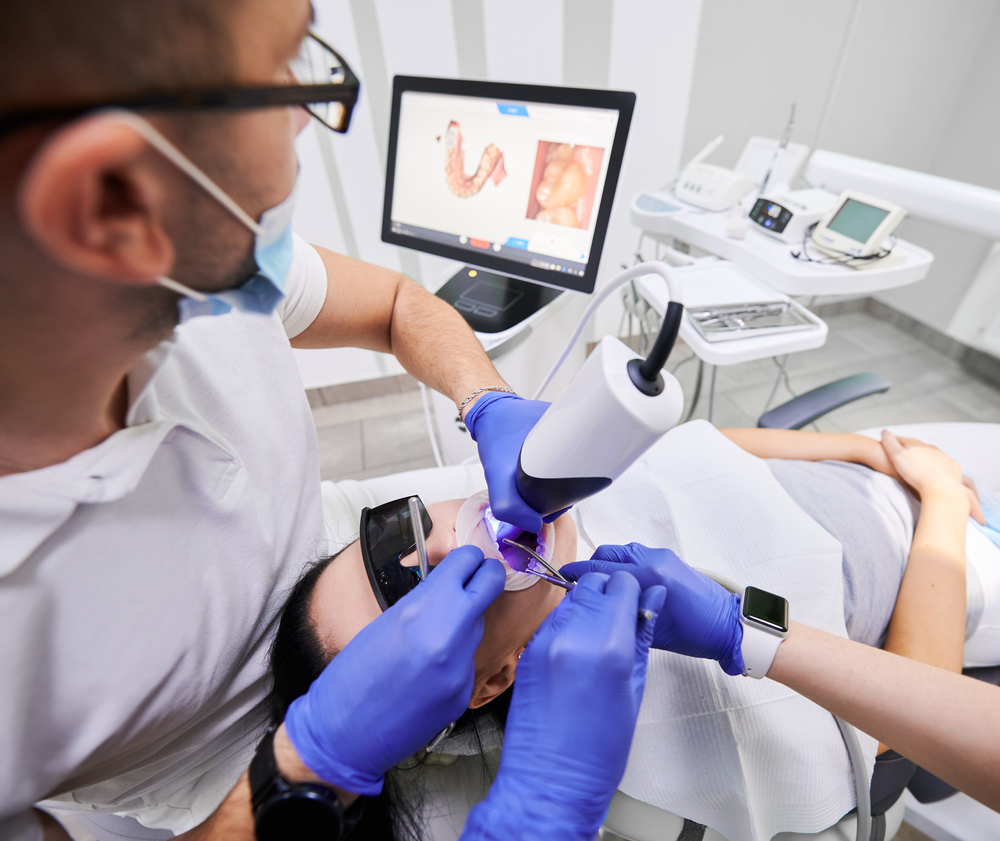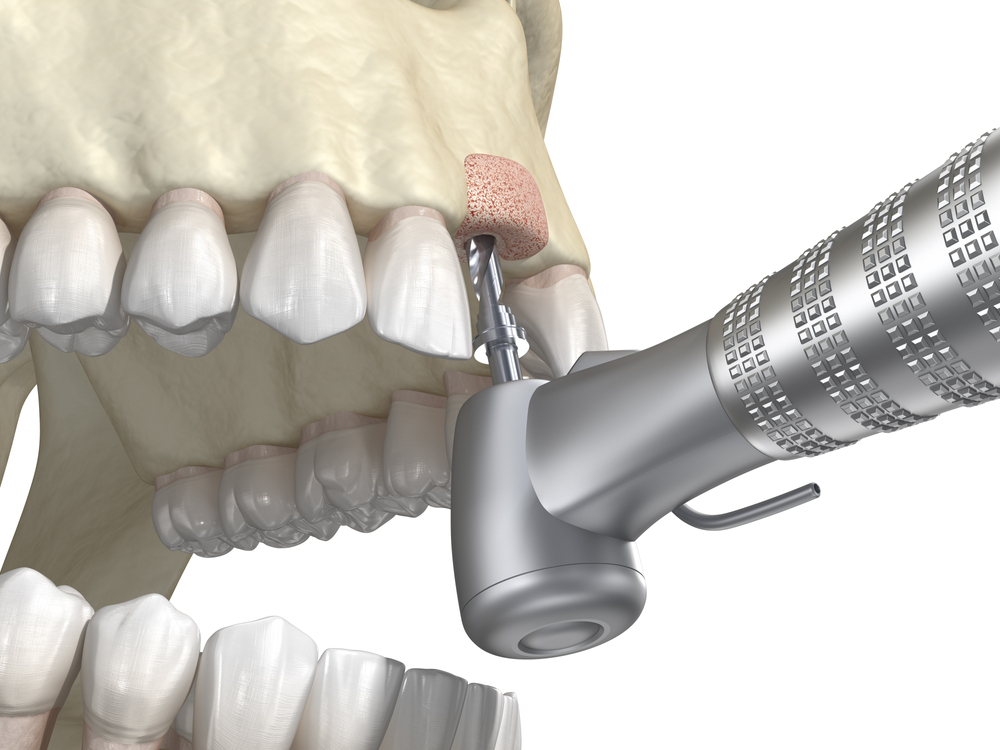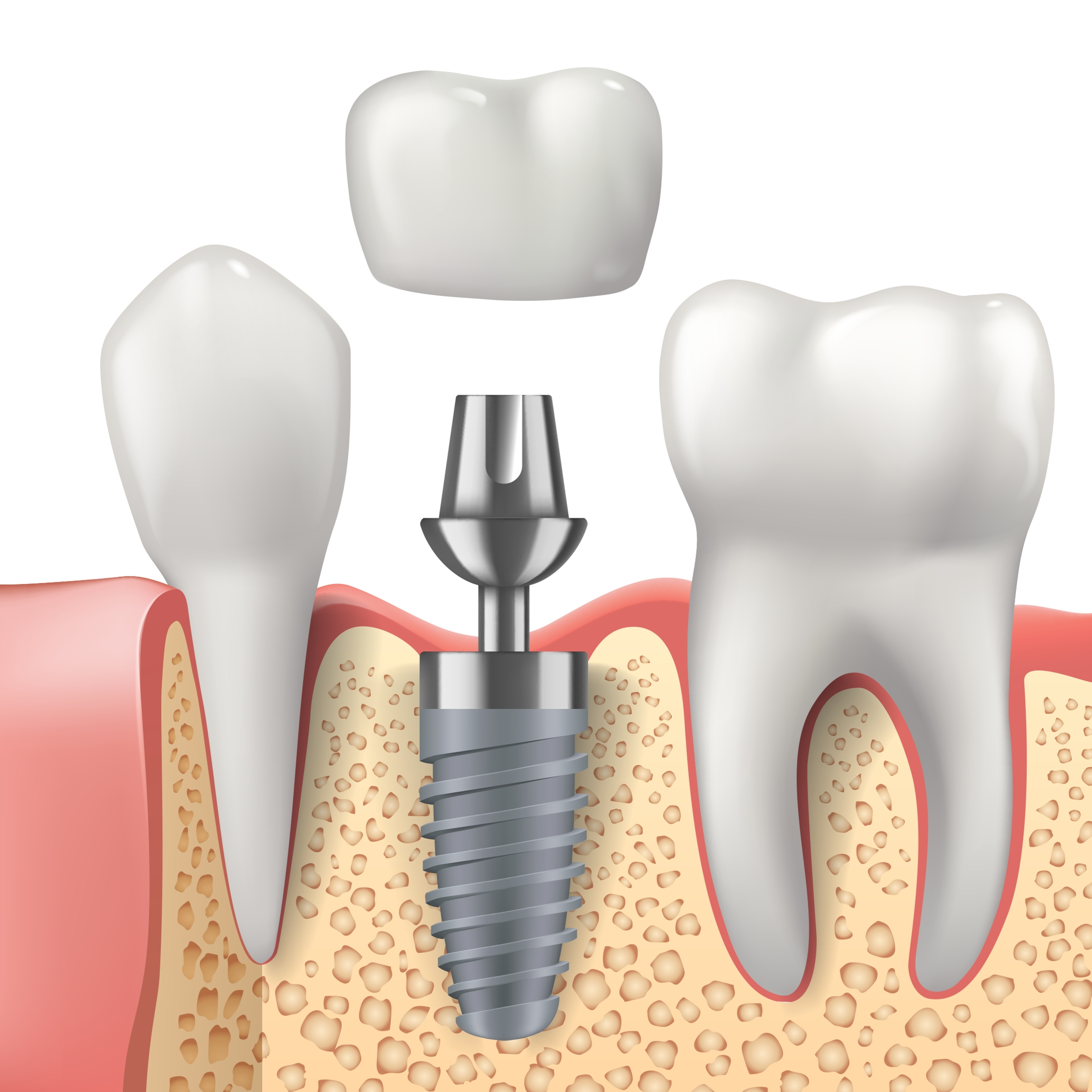

Are you about to have dental implants installed? Are you considering implants, but want to understand the procedure before committing? Rest assured, at DFW Implant Center, Arlington, TX, periodontist, Dr. Farhad E. Boltchi can explain all of the ins and outs of the dental implant procedure. If you’re wondering what the process is like, call our Arlington dental practice at 817-663-4704 if you’re a new patient or 817-467-7731 if you’re a current patient.

The first step in receiving dental implants is to schedule an initial consultation with our Arlington, periodontist, Dr. Boltchi. During this appointment, Dr. Boltchi will examine your mouth and take digital X-rays to determine if you’re a good candidate for treatment. They’ll also discuss your medical history and any medications you’re taking to make sure that the implant surgery is safe for you.

For some patients, additional procedures may be recommended before they can move forward with replacing missing teeth with dental implants. Procedures such as bone grafting and soft tissue grafting are common for those suffering from low jawbone density or who have underlying oral health conditions, such as gum disease.
These supplemental procedures can be performed before or during the dental implant placement process, depending on the patient’s needs and the complexity of their case. Dr. Boltchi will evaluate your specific situation and determine if any additional procedures are necessary to ensure the success of your dental implant procedure.
In some cases, dental implants may not be right for you. Our dental specialist may recommend other restorative dentistry treatments, such as removable dentures or a dental bridge.

The implant surgery is typically an outpatient procedure done under local anesthesia, but some patients may choose to undergo sedation for added comfort. Sedation options are discussed at the initial consultation with your oral surgeon. During the procedure, your implant provider will make a small incision in the gums and carefully place the implant post into the jawbone. The post will then be left to heal and integrate with the bone in the coming months.
Depending on your implant provider, they may perform the surgery with the help of 3D scanning technology, or even laser technology.

During the recovery period, the post will begin the process of osseointegration. Osseointegration is a natural process where the bone around the implant post begins to fuse with the jawbone. This process is essential for the implant to be secure and stable. It usually takes a minimum of several months for osseointegration to be completed.
The healing time for osseointegration varies for each patient, but you’ll be able to return to your normal routine after a few days. Make sure to stick to a soft foods diet and follow any instructions provided. You may have some discomfort or swelling for a few days to a week. Remember, each patient heals differently, so the entire dental implant timeline will fluctuate for each person.

Once the post has fully integrated with the jawbone, you’ll have your final restoration placement appointment. Your custom restoration, a dental crown, bridge, or supported denture will be ready for placement. The final restoration or the artificial tooth will be securely attached to the post, allowing the restoration to look and function just like a natural tooth. You’ll leave the dental office with a brand-new, beautiful smile that you’ll love.

After your dental implant surgery, it’s essential to take great care of your oral hygiene to ensure proper healing and reduce your chance of complications arising. Here are some tips to help you out after oral surgery:
No, not necessarily. In some cases, dental implants can be placed directly into the jawbone without the need to remove any existing teeth. However, if there aren’t enough healthy teeth, tooth extraction may be necessary before the implant surgery.
On average, the dental implant process takes about four to six months. The implant surgery itself takes just a few hours during one appointment, but the post needs time to heal and integrate with the jawbone before your dentist places the final restoration, typically a dental crown or bridge. Osseointegration can take anywhere from three to seven months and is a crucial step as this is when your implant post naturally fuses with your jawbone.
Most patients report little to no pain during the dental implant procedure. A local anesthetic is used to numb the area of the implant site, or your dentist may offer alternative dental sedation options depending on your needs. After the implant procedure, patients usually manage any discomfort or swelling with over-the-counter medications.
The purpose of dental implants is to replace a missing tooth or teeth. When a tooth is lost because of injury, decay, gum disease, or other reasons, it can hurt a person’s oral health and quality of life. Dental implants provide a permanent, durable replacement tooth, improving your natural teeth’ function and appearance.
Do you still have questions about the dental implant procedure? Contact our Arlington, TX, periodontist and schedule your consultation by dialing 817-663-4704 if you’re a new patient or 817-467-7731 if you’re a current patient. With years of experience in implant dentistry, they’ll answer any questions you may have about the dental procedure and help you determine if dental implants are right for you. We conveniently serve Arlington and surrounding areas such as Irving, Fort Worth, and Grapevine, TX.
I understand the information disclosed in this form may be subject to re-disclosure and may no longer be protected by HIPAA privacy regulations and the HITECH Act.

800 West Arbrook Blvd
Suite 360 Arlington, TX 76015